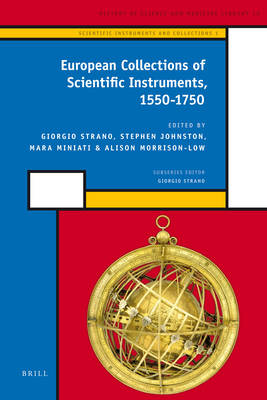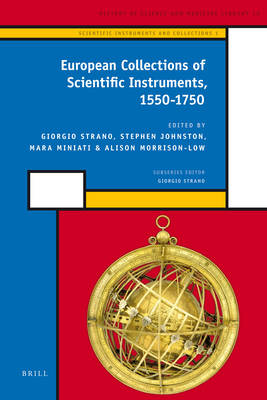
Je cadeautjes zeker op tijd in huis hebben voor de feestdagen? Kom langs in onze winkels en vind het perfecte geschenk!
- Afhalen na 1 uur in een winkel met voorraad
- Gratis thuislevering in België vanaf € 30
- Ruim aanbod met 7 miljoen producten
Je cadeautjes zeker op tijd in huis hebben voor de feestdagen? Kom langs in onze winkels en vind het perfecte geschenk!
- Afhalen na 1 uur in een winkel met voorraad
- Gratis thuislevering in België vanaf € 30
- Ruim aanbod met 7 miljoen producten
Zoeken
European Collections of Scientific Instruments, 1550-1750
€ 245,95
+ 491 punten
Omschrijving
Collections of scientific instruments originated as part of Renaissance collections of 'naturalia' and 'artificialia'. Surveying and astronomical instruments were common in such collections, their role being to impress visitors by displaying the power that a ruler acquired through the control of nature. This book offers selected studies of notable European collections of scientific instruments from the sixteenth to eighteenth centuries. These studies also present the work of important instrument makers of the time, and their relations with patrons and rulers. A final section focuses on the role of modern museums and collectors in saving this scientific heritage from dispersal. The result is a contemporary perspective on the formation of the most important museums of the history of science.
Contributors include: Paolo Brenni, Filippo Camerota, Gloria Clifton, Wolfram Dolz, Sven Dupré, Karsten Gaulke, Sven Hauschke, Michael Korey, Mara Miniati, Tatiana M. Moisseeva, Peter Plaßmeyer, Klaus Schillinger, Giorgio Strano, Koenraad Van Cleempoel, and Ewa Wyka.
Scientific Instruments and Collections, 1
Contributors include: Paolo Brenni, Filippo Camerota, Gloria Clifton, Wolfram Dolz, Sven Dupré, Karsten Gaulke, Sven Hauschke, Michael Korey, Mara Miniati, Tatiana M. Moisseeva, Peter Plaßmeyer, Klaus Schillinger, Giorgio Strano, Koenraad Van Cleempoel, and Ewa Wyka.
Scientific Instruments and Collections, 1
Specificaties
Betrokkenen
- Uitgeverij:
Inhoud
- Aantal bladzijden:
- 218
- Taal:
- Engels
- Reeks:
- Reeksnummer:
- nr. 1
Eigenschappen
- Productcode (EAN):
- 9789004172708
- Verschijningsdatum:
- 1/02/2009
- Uitvoering:
- Hardcover
- Formaat:
- Genaaid
- Afmetingen:
- 165 mm x 244 mm
- Gewicht:
- 589 g

Alleen bij Standaard Boekhandel
+ 491 punten op je klantenkaart van Standaard Boekhandel
Beoordelingen
We publiceren alleen reviews die voldoen aan de voorwaarden voor reviews. Bekijk onze voorwaarden voor reviews.








